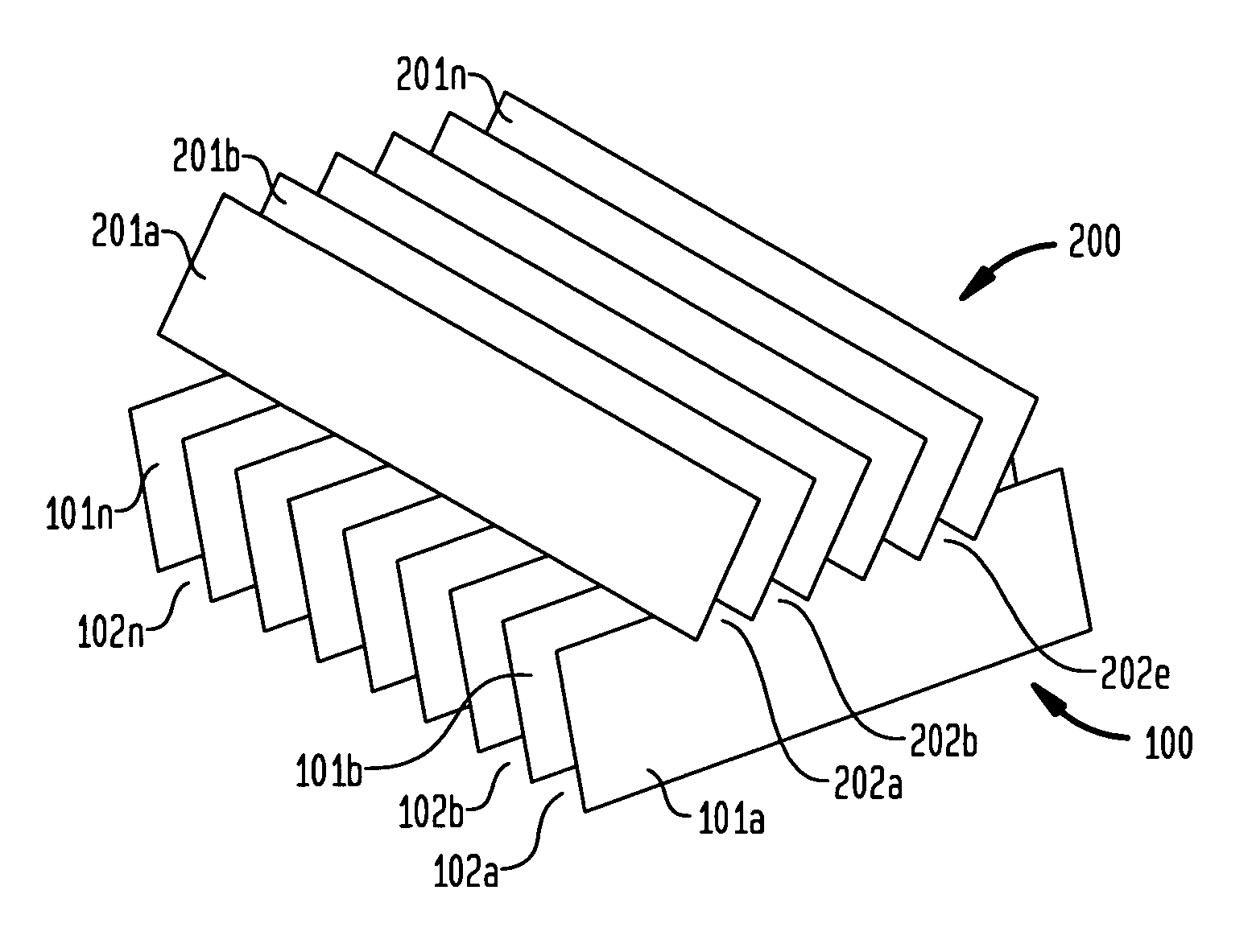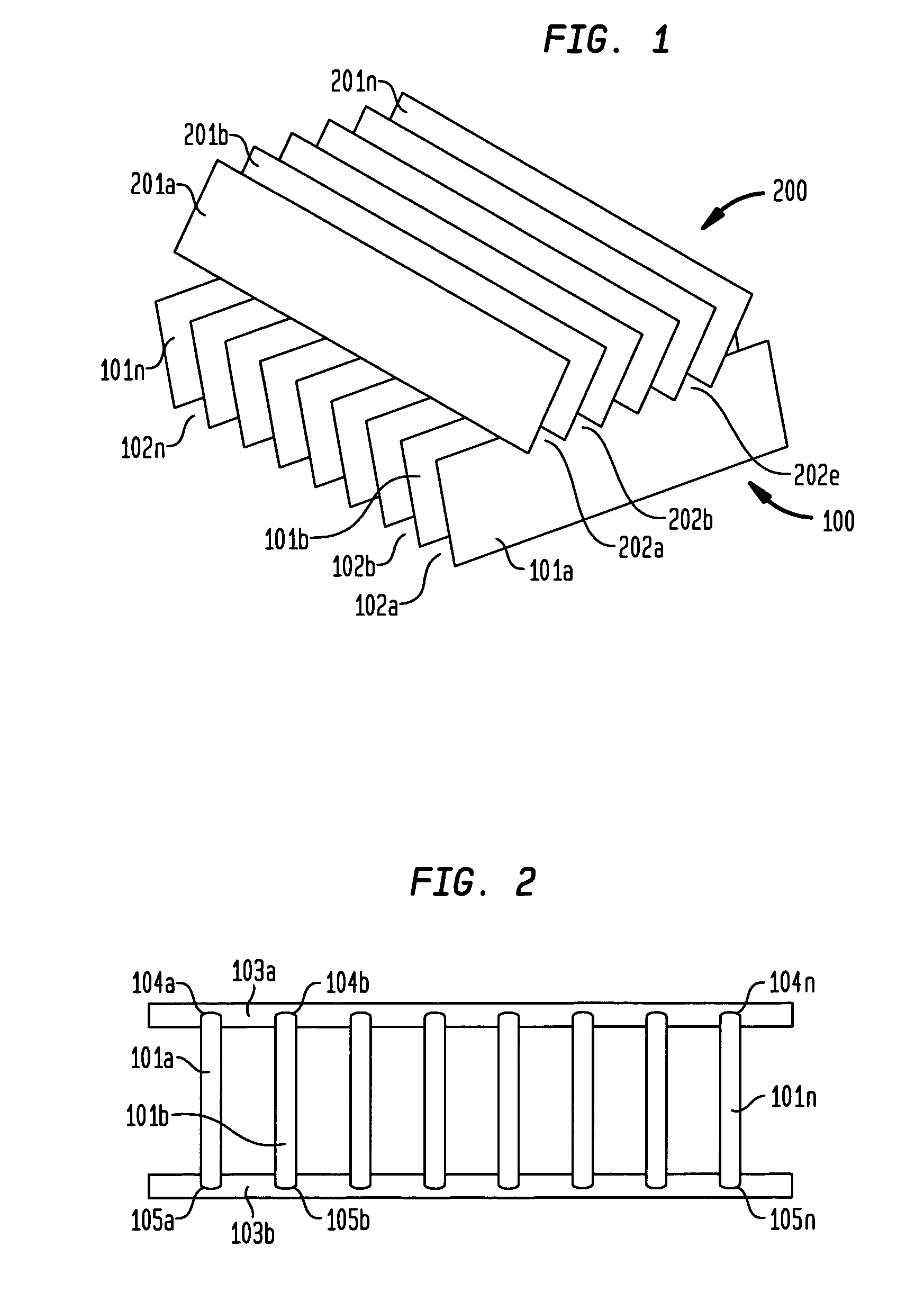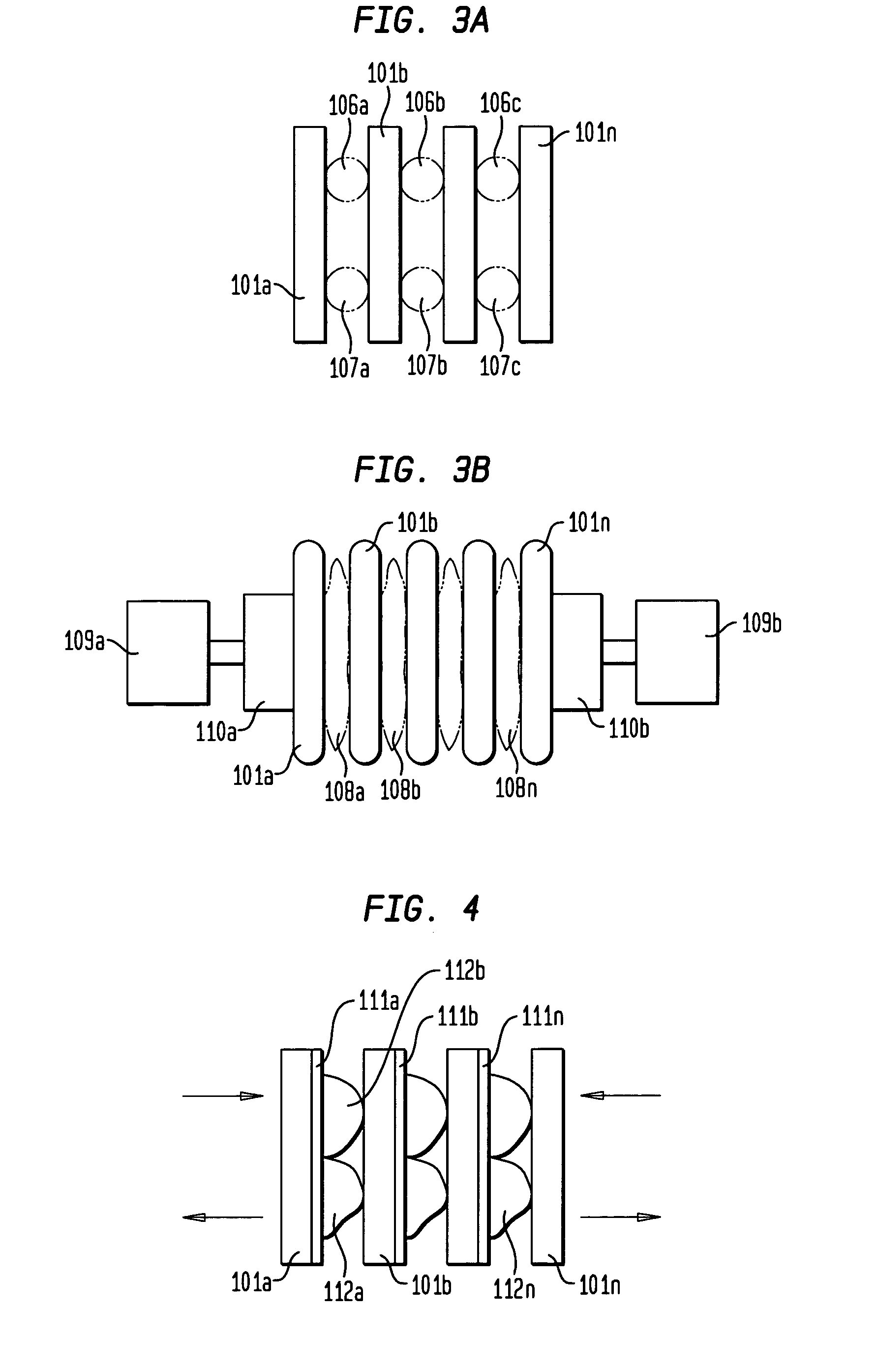Collimator with variable focusing and direction of view for nuclear medicine imaging
a collimator and nuclear medicine technology, applied in the field of nuclear medicine, can solve the problems of special problems in collecting radiation emission and creating images, one-dimensional collimation or slat geometry used by slat detectors, and burdening slat detectors with other undesirable limitations, etc., and achieves the effect of improving the imaging of small organs and high resolution
- Summary
- Abstract
- Description
- Claims
- Application Information
AI Technical Summary
Benefits of technology
Problems solved by technology
Method used
Image
Examples
second embodiment
[0030]In a second embodiment the spaces (102a, 102b, . . . 102n) between the slats in the first layer (100) can be varied. Similarly, the spaces (202a, 202b, . . . 202n) between the slats in the second layer (200) can be varied. As used herein, variable spaces is intended to mean that the distance between the slats (101a, 101b, . . . 101n; 201a, 201b, . . . 201n) at one end of said slates is less than the distance between slats at the other end of said slats. By varying the spaces between the slats in this manner, non-parallel beam collimators are created. In addition, the direction of view can be changed using such a variable collimator. In order for direction of view to be changed in a general manner, a means creating repulsive forces between the slats needs to be created.
[0031]In one aspect of this embodiment, the slats (101a, 101b, . . . 101n; 201a, 201b, . . . 201n) can be held apart by springs. As shown in FIG. 3A, the slats (101a, 101b, . . . 101n) are held apart by springs (...
third embodiment
[0034]In a third embodiment, the spaces in one layer, e.g., spaces (102a, 102b, . . . 102n) between the slats in the first layer (100) are non-variable, i.e., fixed, such as described above. The spaces in a second layer, e.g. spaces (202a, 202b, . . . 202n) between the slats in the second layer (200) can be varied and under direct directional control, such as described above. Alternatively, the spaces (102a, 102b, . . . 102n) between the slats in the first layer (100) can be varied and under direct directional control. The spaces in a second layer, e.g. spaces (202a, 202b, . . . 202n) between the slats in the second layer (200) are non-variable, i.e., fixed.
[0035]By varying the spaces between the slats in this manner, non-parallel beam collimators are created. Such collimators may be advantageous in SPECT studies of small organs, such as brain, heart, kidney, thyroid, etc. The convergence of the collimator can be changed to adapt for each study. Also, the convergence can be changed ...
PUM
 Login to View More
Login to View More Abstract
Description
Claims
Application Information
 Login to View More
Login to View More - R&D
- Intellectual Property
- Life Sciences
- Materials
- Tech Scout
- Unparalleled Data Quality
- Higher Quality Content
- 60% Fewer Hallucinations
Browse by: Latest US Patents, China's latest patents, Technical Efficacy Thesaurus, Application Domain, Technology Topic, Popular Technical Reports.
© 2025 PatSnap. All rights reserved.Legal|Privacy policy|Modern Slavery Act Transparency Statement|Sitemap|About US| Contact US: help@patsnap.com



